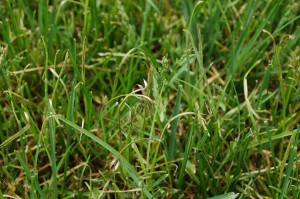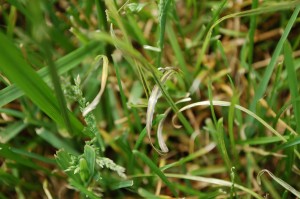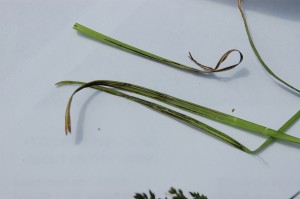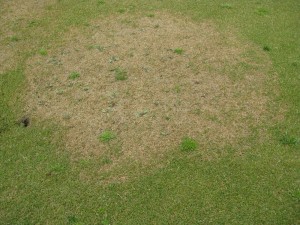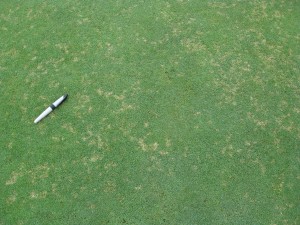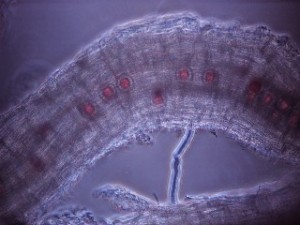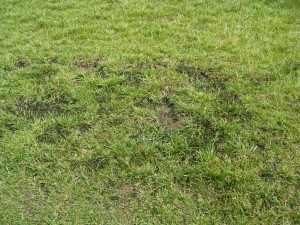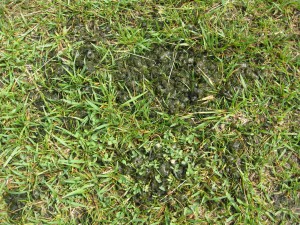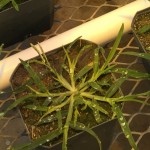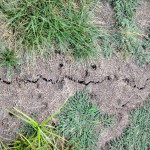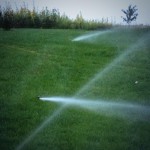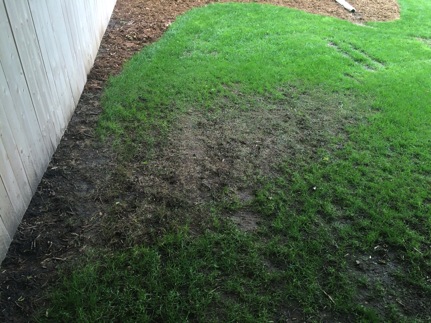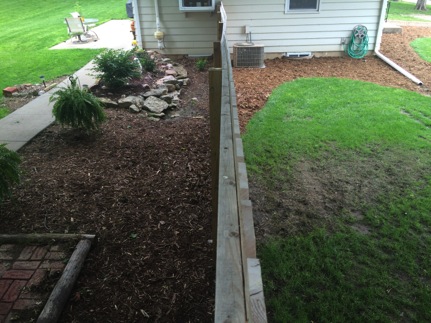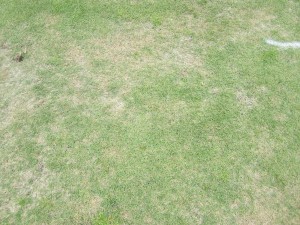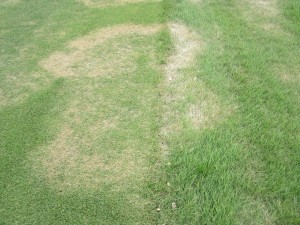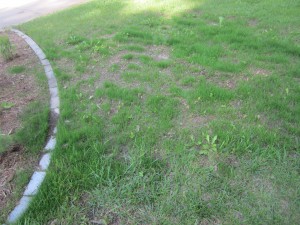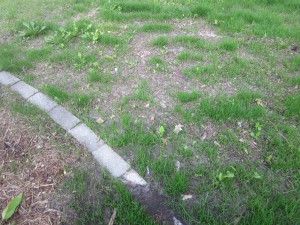(by Evan Alderman and Jared Hoyle; KSU Turfgrass Research and Extension)
 As some of you may know there is currently a lot of research right now at Kansas State University focusing on the use of buffalograss, and how it can be better utilized to lower water usage. We are looking at many different aspects of buffalograss in homelawns, golf courses, roadsides, parks, athletic fields and more. But one question that repeateadly comes across KSU Turfgrass Extension desk is how does buffalograss hold up against golf cart traffic on a golf course. Research is currently being conducted to see how buffalograss handles simulated golf cart traffic during the summer months, but how does it handle golf cart traffic in the winter? And how can we conserve water going into the winter months?
As some of you may know there is currently a lot of research right now at Kansas State University focusing on the use of buffalograss, and how it can be better utilized to lower water usage. We are looking at many different aspects of buffalograss in homelawns, golf courses, roadsides, parks, athletic fields and more. But one question that repeateadly comes across KSU Turfgrass Extension desk is how does buffalograss hold up against golf cart traffic on a golf course. Research is currently being conducted to see how buffalograss handles simulated golf cart traffic during the summer months, but how does it handle golf cart traffic in the winter? And how can we conserve water going into the winter months?
One way is turfgrass colorants! There is a lot of research conducted on the dormant application of turfgrass colorants instead of overseeding the dormant warm-season turf. But how do these colorants stand the time when subjected to normal golf cart traffic?
The objectives of this research were to;
- Investigate the longevity of turf colorants when subjected to simulated golf cart traffic
- Explore the effects of turf colorants on buffalograss at fairway height
- Evaluate the effects of simulated golf cart traffic on dormant buffalograss.
As summer is approaching and a blistery winter has passed us, the first year of this research has come to an end.
Three turfgrass colorants (Endurant, Endurant Premium, and Green Lawnger) and a overseeded treatment (Perennial Ryegrass @ 10lb./1000ft2) were investigated over a period of 24 weeks beginning in late October of 2014. The colorants were applied at 43 gal/ Acre at a 1:6 dilution (colorant to water). Traffic was applied weekly at 0, 2, 4, or 8 passes with a golf cart traffic simulator. Traffic was not applied if day temperatures did not reach 40°F or the turfgrass plots were covered with snow.
 The data in Table 1 represents evaluations for percent green cover. As the weeks progressed percent green color decreased for all treatments presented. At 12 weeks after treatment it should be noted that with 0 and 2 passes of traffic weekly, Endurant Premium had more green cover than the overseeded treatment at those traffic levels.
The data in Table 1 represents evaluations for percent green cover. As the weeks progressed percent green color decreased for all treatments presented. At 12 weeks after treatment it should be noted that with 0 and 2 passes of traffic weekly, Endurant Premium had more green cover than the overseeded treatment at those traffic levels.
Turfgrass colorants could be a viable option to help with water conservation efforts. Turfgrass colorants performed best when traffic was not applied. If traffic is applied to an area with turfgrass colorants, repeat applications of the colorant may be needed.
 At 24 weeks after treatment it can be seen that all treatments are starting to green up after the long winter, with treatments receiving no traffic having the highest percent green cover.
At 24 weeks after treatment it can be seen that all treatments are starting to green up after the long winter, with treatments receiving no traffic having the highest percent green cover.
To all the golf course superintendents that allow traffic on your buffalograss in the winter, be aware that in the spring you are going to have to increase your management practice to get that buffalograss to recover before the summer. The buffalograss eventually will recover but…why do you want to start from behind in the spring?
***Mention of trade names or commercial products in this article is solely for identification purposes and does not imply recommendation or endorsement, nor is criticism implied of similar products not mentioned by Kansas State University.***
Don’t forget to follow me on twitter @KSUTurf.
Also, visit our facebook page www.facebook.com/KSUTurf

